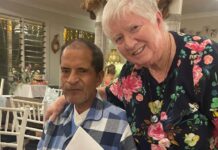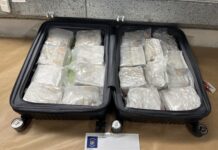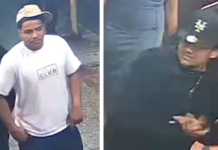‘Oku taupotu ‘i lalo ha fakamatala fakaTonga
The number of New Zealanders who have had a second booster shot is much lower than people who had a first booster shot.

Covid modeller Dr Emily Harvey said many people who were eligible for a second booster had received their last injection more than a year ago.
Dr Harvey told the New Zealand Herald that while protection from vaccination waned over time, the waning of protection against severe disease was much slower than for protection against infection.
“This means that any increase in vaccination and booster levels will help to reduce hospitalisation numbers.”
Dr Dion O’Neale from Covid-19 Modelling Aotearoa said vaccination remained the best protection.
The group has been trying to predict what the next wave of the Covid-19 virus will look like in New Zealand, but said there was not enough information to predict exactly what would happen.
Nor was there any evidence to show what toll it is likely to take on the community.
There was no immediate evidence to suggest that the new variants of Covid that would probably feature in any third wave were any more severe than their Omicron predecessors.
Reinfections make up about 13% of cases. Researchers have suggested that people who were infected during the original wave in 2020 were more at risk now because their immunity would have diminished
Meanwhile, Otago University epidemiologist Professor Michael Baker said the warmer weather did not affect the Covid variants most of concern because they were so infectious.
“They get a bit of a boost from winter when people are indoors more, but they don’t absolutely need winter conditions to spread,” Professor Baker said.
As Kaniva News reported yesterday, the two variants currently of concern are XBB and BQ1.1.
Professor Baker said XBB was driving the surge of infections in Singapore.
“That may be what we’ll see here,” he said.
FAKAMATALA FAKATONGA
‘Oku tō lalo ‘a e tokolahi ‘o e kakai Nu’u Sila kuo nau huhu malu’i pusita ua’ ‘i he tokolahi ‘o e kau pusita ‘uluaki.
Pehe ‘e he Mōtela ‘o e Koviti’ ko Dr Emily Harvey ko e tokolahi ‘o e kakai ne lava ke nau huhu malu’i pusita ua ne fakahoko ia laka hake ‘i he ta’u ‘e taha kuo hili’.
Ne fakaha’e Dr Harvey ki he New Zealand Herald lolotonga ‘oku holo e mālohi’ o ehuhu malu’i he ‘alu ‘a e taimi’, oku māmālie ange holo ‘ene malu’i ‘i he kakaha ‘a e mahaki ‘i he’ene malu’i ‘a e pipihi.
‘Oku ‘uhinga ‘eni ka fakalahi ‘a e huhu malu’i mo e pusitaa’ ‘e tokoni ia ke fakasi’si’i ‘a e tokolahi ‘o e kau tākoto falemahaki’.
Pehe ‘e Dr Dion O’Neale mei he Covid-19 Modelling Aotearoa oku kei hoko pe ‘a e huhu malu’i ko e malu’i lelei taha ia mei he mahaki.
Oku feinga ‘a e kulupu ni ke vavalo’i pe ‘e fōtunga fefe ‘a e vailasi ‘o e Koviti ka hoko mai’ ‘i Nu’u Sila ni pea ‘oku te’eki ha fakamooni ko e ha e lahi ka tō he komiunitii’.
Na’e te’eki ha fakamooni leva ke ne fokotu’u mai ko e fōtunga fo’ou ‘o e Koviti ‘e lava ke ne langa’i ha toe aake hono ua mai ‘o e mahaki ‘e ala kakaha ange ia ‘i he ‘Omikoloni’.
Ko e peseta ‘e 13 ko e toe pihia. Pehe ‘e he liseesa ko e kakai ne pihia lolotonga ‘e ‘uluaki too’ i he 2020 ‘oku nau ala matu’utamaki ange he taimi ni koeuhi kuo holo ‘a hono ivi malu’i ‘imiunitii’.
Taimi tatau kuo pehe ‘e Palōfesa Michale Baker ko e ‘epitemolosisi mei he ‘Univesiti ‘o Otago ko e mafana ange ‘a e ‘ea ‘e ‘ikai ke ne uesia ‘e ia ‘a e ngaahi fakafotunga ‘o e Koviti koe’uhi ‘oku nau fu’u pipihi.
Nau ki’i alāanga ange mo e momoko ‘o ala mahiki ai ‘enau pipihi he taimi ‘oku nofo fale ai ‘a e kakai ka ‘oku ‘ikai ‘uhinga ia ‘oku nau fiema’u ke momoko e ‘ea’ ka nau toki mafola, ko e lau ia ‘a e Palofesa Baker.
Hangē ko e lipooti ‘a e Kaniva ‘aneafi’, ko e ongo fōtunga ‘e ua ‘oku fai ki ha ‘a e hoha’a’ ko e XBB mo e BQ1.1.
Pehe ‘e baker ko e XBB ‘oku tu’unga ai ‘a e mahiki ‘a e mahaki ‘i Singapore.
Mahalo ko e me’a ia te ala ma’u heni, ko ‘ene lau ia.







